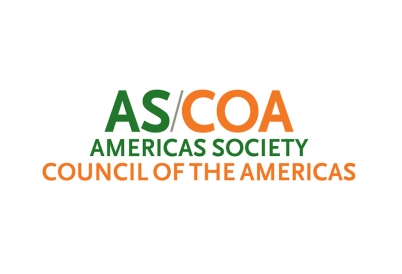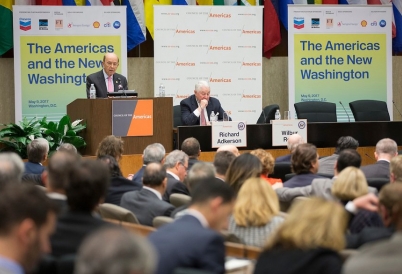North America Hub
North America Hub
This page was last updated on October 1, 2018.
Talks to renegotiate the North American Free Trade Agreement kicked off in August 2017—more than two decades after the deal went into force. The three partners began the modernization process in the face of dramatic changes in the global economy that include new production models, integrated supply chains, technological advances, and a revolution in energy production. As China and other emerging economies rise, North American integration becomes a strategic necessity when it comes to production efficiencies, economies of scale, and comparative advantages.
On September 30, 2018, the three countries came together to agree to the text of a new trilateral pact called the United States-Mexico-Canada Agreement (USMCA).
This portal showcases AS/COA’s programs and activities focused on the evolving North American relationship.
Resources from NAFTA 2.0 negotiations:
- United States: Summary of the Objectives for the NAFTA Renegotiation (released July 17, 2017).
- Mexico: Priorities for NAFTA's modernization (released August 2, 2017).
- Canada: Remarks by Foreign Affairs Minister Chrystia Freeland on core objectives (delivered August 14, 2017)
- NAFTA 2.0 Press Conference: Opening remarks from the launch of negotiations.
- Text of the USMCA, via the Office of the U.S. Trade Representative (released September 30, 2018).
Our work in Washington includes providing congressional testimony, submitting comments on U.S. policies, and supporting U.S. policies on North American trade and energy cooperation.
Council of the Americas joins associations and companies representing millions of American workers in a letter to U.S. secretaries that backs ISDS as part of NAFTA renegotiations.
The negotiations are not a zero-sum game and will require balance, dexterity, and political sincerity, says AS/COA's Eric Farnsworth in testimony before the U.S. Trade Representative Interagency Commission.
In comments submitted to Congress, Council of the Americas strongly supports negotiations to modernize the trade agreement.
The Council strongly supports the HLED process as a means to enhance North America’s global competitiveness and build out broader trade expansion initiatives in the region.
The trade pact proved an economic success, and now should be modernized to boost North American competitiveness, says COA's Eric Farnsworth.
Through publications exploring the importance of North American integration and programs with decision makers focused on the region, our analysis showcases AS/COA efforts to strengthen trilateral ties.
As NAFTA talks get underway, Mexico’s latest big oil finds are a sharp reminder of the benefits of open energy investments, writes AS/COA’s Naki Mendoza in Financial Times' beyondbrics.
Luis Videgaray, Chrystia Freeland, Ildefonso Guajardo, and José Antonio Meade, along with 6 CEOs and other private-sector leaders, all spoke at the event in the Palacio Nacional.
“The Americas and the New Washington” featured keynote speeches from U.S. Secretary of Commerce Wilbur Ross, and Senators John McCain and Marco Rubio.
Let’s improve the relationship, not destroy it. AQ looks at where U.S.-Mexico ties stand, and where they’re headed.
Estados Unidos y México están entrelazados de maneras notables y sorprendentes que desafían la noción de una frontera claramente marcada.
How a landmark trade agreement changed Mexico forever.
Modernizing the trade deal would make the United States more—not less—competitive globally, write Mack McLarty and Penny Pritzker in the Los Angeles Times.
The Trump administration must pursue negotiations that yield mutual benefits, writes AS/COA’s Chairman Emeritus William R. Rhodes for Financial Times' beyondbrics.
Canada and Mexico occupy the top two export destination spots for 26 U.S. states, including eight of the 10 biggest state economies.
Just one in five Americans sees Mexico as a good neighbor to the United States. But the facts tell a different story.


























